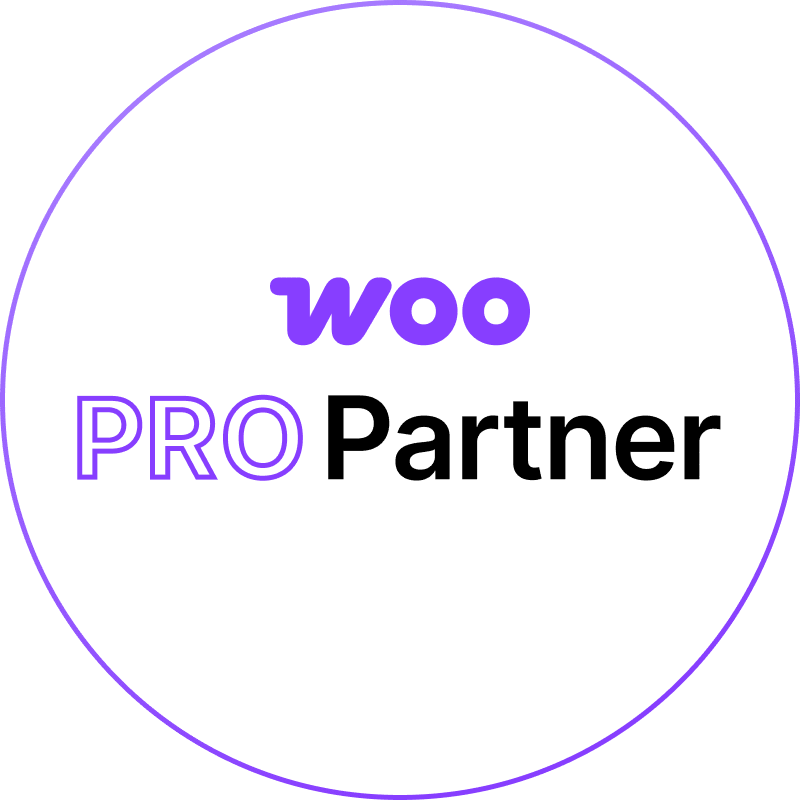How to Build the Perfect Small Business Website: Essential Tips for Success
Introduction: Why Every Small Business Needs a Great Website
In today’s digital age, a website is one of the most essential tools a small business can have. Whether you’re a local shop, a growing service provider, or an online startup, a well-designed website serves as the online face of your business, making a powerful first impression on potential customers. It’s no longer enough to rely on word-of-mouth referrals or a simple social media presence; customers expect to find credible information online before making decisions. A great website establishes your business’s credibility, communicates your value, and, most importantly, converts visitors into loyal customers.
Small business websites are often the first point of contact between you and potential clients, so they need to reflect professionalism and quality. A thoughtfully designed website also provides visitors with valuable information, answers frequently asked questions, and makes it easy for them to learn about your products, services, and mission. Additionally, an effective website helps small businesses build trust, set themselves apart from competitors, and increase their reach. With an optimized, user-friendly website, your business can reach and engage more customers than ever, transforming casual visitors into dedicated clients.
Defining Small Business Website Design
Small business website design is all about creating an online presence tailored specifically to meet the needs of smaller companies. Unlike larger corporate sites, which often have complex structures and advanced features, small business websites prioritize simplicity, usability, and direct communication. These websites are designed to be easy to navigate, with concise, well-organized information that allows users to quickly find what they need. Small businesses benefit from streamlined layouts, clear calls to action (CTAs), and visually appealing yet straightforward designs that make a lasting impression on visitors.
A key aspect of small business website design is ensuring that the site is mobile-friendly and easy to use on all devices. Since many potential customers will access the site from their phones, a responsive design that automatically adapts to any screen size is essential. Small business sites often include a homepage, about page, services or products page, and contact information – the fundamental sections that provide a complete picture of what the business offers. The goal is to create an online experience that is approachable, engaging, and focused on helping visitors find what they’re looking for with minimal effort.
When executed well, small business website design serves as an invaluable asset, enabling businesses to connect with their audience, communicate their brand effectively, and provide a seamless experience that fosters customer loyalty.
Top Features for an Effective Small Business Website
Every small business website should include a few key features that make it effective, engaging, and user-friendly. Here are some of the most important elements to consider:
- Attention-Grabbing Homepage: The homepage is typically the first page visitors see, so it needs to be visually appealing and instantly communicate what your business does. A clear, bold headline, professional images, and a brief introduction to your services are essential. A clean layout with easy navigation options helps guide users through the rest of the site.
- Clear Navigation Bar: A straightforward navigation menu is crucial for helping visitors move around your site. This menu should be easy to find and include links to the most important sections, like the About page, Services or Products page, and Contact page. Avoid cluttering the navigation with too many options; instead, focus on simplicity and ease of use.
- About Page That Builds Trust: An About page gives you a chance to connect with visitors on a personal level. Share your business’s story, mission, and values to help visitors get to know you. This page is also an excellent place to showcase any unique selling points, such as years of experience, industry certifications, or notable achievements.
- Services or Products Page with Details: Visitors should be able to learn about your offerings in detail. Use the Services or Products page to describe what you do, highlight key benefits, and explain what sets your business apart. Including images or short descriptions can make it easier for customers to understand your offerings at a glance.
- Contact Information and Call-to-Action (CTA): Make it easy for visitors to contact you by including clear contact information and a contact form. Many small business websites feature a “Get in Touch” button or a prominent CTA on the homepage, leading users to the contact page. The CTA should be direct, encouraging visitors to take the next step, whether it’s booking a service, making a call, or submitting a contact form.
These features provide a foundation for an effective small business website, helping to create a seamless experience that captures attention, communicates value, and guides visitors toward taking action.
Choosing the Right Platform for Your Small Business Website
Selecting the right platform is a crucial step in small business website design. The platform you choose will determine how easily you can manage, update, and scale your website as your business grows. Popular website platforms for small businesses include WordPress, Squarespace, and Wix, each offering distinct advantages depending on your needs.
- WordPress: Known for its flexibility and extensive customization options, WordPress is an open-source platform that powers a significant portion of websites on the internet. It’s ideal for small businesses that want a custom site with room to grow, as WordPress offers thousands of plugins for added features. However, it may require a bit of a learning curve and some technical knowledge to fully take advantage of its features.
- Squarespace: Squarespace offers a user-friendly interface and attractive, professional templates that are perfect for small businesses looking for a sleek design without much hassle. It’s an all-in-one platform with built-in hosting and customization options, making it easy to use. While it may not offer as much customization as WordPress, it’s a great option for small businesses focused on simplicity and visual appeal.
- Wix: Wix is another popular option, known for its drag-and-drop interface that makes it easy for beginners to create visually appealing sites quickly. It provides flexibility with plenty of templates and customization options, though it may be more limiting for businesses that need advanced features or scalability.
Choosing the right platform depends on your business’s current needs and future goals. If you plan to scale or add complex features down the road, WordPress may be a better fit. For those prioritizing ease of use and aesthetic appeal, Squarespace or Wix might be the best choice.
Designing for Mobile and User Experience (UX)
In today’s mobile-driven world, ensuring your website is mobile-friendly is essential. Mobile optimization means designing your site to work seamlessly on smartphones and tablets, adapting to various screen sizes while maintaining functionality and visual appeal. A mobile-optimized site not only improves user experience but also helps with search engine ranking, as Google and other search engines favor mobile-friendly websites.
Beyond mobile optimization, focusing on overall user experience (UX) is key to a successful small business website. UX design aims to create a site that is intuitive and enjoyable for visitors to navigate. For small businesses, this means designing with simplicity and accessibility in mind, ensuring that users can easily find information, contact your business, and understand your offerings without frustration.
Some essential UX considerations include:
- Clear, Readable Fonts and Colors: Choose fonts and color schemes that are easy to read on all devices, avoiding overly decorative fonts and color combinations that are hard on the eyes.
- Quick Load Times: Slow websites deter visitors. Make sure images are optimized, code is clean, and unnecessary elements are minimized to keep load times fast.
- Clickable Calls to Action (CTAs): Place CTAs strategically throughout your site, making it easy for users to take the next step, whether that’s contacting you, signing up for a newsletter, or booking a service.
By prioritizing mobile-friendly design and a positive user experience, you’re creating a website that is accessible, engaging, and effective at converting visitors into customers.
Optimizing for Local SEO to Reach Your Community
For small businesses, local SEO is an invaluable strategy to attract customers within your geographic area. By optimizing your website for local searches, you increase the likelihood that potential customers in your community will find your business online. Here are some essential local SEO strategies to incorporate into your small business website:
- Use Local Keywords: Incorporate location-specific keywords throughout your website content. For example, if you’re a bakery in Austin, phrases like “Austin bakery” or “bakeries near me” can help local customers find you when searching online.
- Set Up Google My Business: Claiming and optimizing your Google My Business profile can increase your visibility in local search results and Google Maps. Include accurate business information, photos, and customer reviews to enhance your profile.
- Create a Locally Relevant Contact Page: Make sure your contact page includes your full business address, phone number, and other relevant information. Embedding a Google Map can also make it easier for customers to find your location.
- Encourage Online Reviews: Positive reviews are a strong signal to search engines that your business is credible and relevant. Encourage satisfied customers to leave reviews on Google and other review platforms, as these can boost your local rankings.
- Optimize Meta Tags and Descriptions with Local Keywords: Use location-specific keywords in your title tags and meta descriptions to improve your chances of appearing in local search results.
Local SEO can help your business stand out in your area, reaching customers who are searching for the services you offer nearby. By implementing these techniques, you’ll be well-positioned to increase your visibility and connect with the community you serve.
Optimizing for mobile, enhancing user experience, and targeting local SEO are essential steps in building a small business website that not only attracts visitors but also drives meaningful engagement and customer conversions.
Budget-Friendly Design Options for Small Businesses
One of the main concerns for small businesses investing in a website is staying within budget. Fortunately, there are several cost-effective options that allow small businesses to create a professional-looking website without overspending. Here are a few approaches to consider:
- Templates and DIY Platforms: Many website platforms, like WordPress, Squarespace, and Wix, offer pre-designed templates that can be customized to reflect your brand. These templates are typically affordable, easy to set up, and require minimal design experience. They’re a great choice for businesses that need a quick, cost-effective solution.
- Semi-Custom Websites: If you want more customization but can’t afford a fully custom design, a semi-custom site might be a good compromise. This approach uses a template as a foundation but allows for more branding elements and personalized design. It provides a polished look without the price tag of a fully custom site.
- Freelance Designers or Small Agencies: Hiring a freelance designer or a small agency can also be budget-friendly, especially if you need more than a template but less than a full-scale design agency’s services. Freelancers often charge lower rates than large firms and can deliver quality work tailored to your specific needs.
These budget-friendly options make it possible to get a professional website that suits your brand and business goals without a major financial commitment. Selecting the right approach depends on your budget, the level of customization you need, and how much control you want over the design process.
Content Tips for Small Business Websites
Compelling content is just as important as design for a small business website. Well-crafted content helps communicate your brand’s personality, conveys your unique selling points, and guides visitors toward taking action. Here are some tips to make your website content effective and engaging:
- Focus on Clarity and Conciseness: Small business websites should avoid overly technical jargon or long-winded descriptions. Instead, focus on clear, concise language that makes it easy for visitors to understand your offerings at a glance.
- Highlight Key Benefits: Rather than just listing products or services, emphasize the benefits that set your business apart. Explain how your offerings solve problems or meet customer needs, making a stronger connection with potential clients.
- Use Engaging Headlines and Subheadings: Headlines and subheadings break up content and make it more scannable, helping visitors quickly find information. Make sure these headlines are clear, benefit-focused, and aligned with your brand voice.
- Incorporate Customer Testimonials and Case Studies: Social proof can be incredibly effective in building trust. Include testimonials from satisfied clients or short case studies that show how your business has helped others achieve their goals.
- Add a Strong Call to Action (CTA): Each page should include a CTA that guides visitors toward the next step, whether it’s contacting you, scheduling a consultation, or making a purchase. Keep CTAs clear, direct, and relevant to the page content.
Well-structured, engaging content will keep visitors on your site longer, increase trust in your brand, and improve conversion rates.
Maintenance and Security for Small Business Websites
Maintaining a website after it goes live is essential for keeping it secure, functional, and up-to-date. Regular maintenance and security checks not only protect your website from potential threats but also ensure an optimal user experience. Here are a few essential aspects of website maintenance:
- Regular Updates: Keep your website’s software, plugins, and themes updated to avoid security vulnerabilities. Most website platforms, especially WordPress, release regular updates to improve security and functionality.
- Backups: Regular backups are critical in case of data loss or website issues. Many hosting providers offer automatic backups, but you can also use plugins or services to schedule backups, ensuring your site can be restored if needed.
- Security Measures: Use security plugins, SSL certificates, and secure passwords to protect your site from hackers and malware. SSL certificates, which encrypt data between the server and the user, are especially important for sites handling customer data and payments.
- Routine Performance Checks: Check your website’s load times, functionality, and mobile responsiveness periodically. These factors impact user experience and search engine rankings, so ensuring optimal performance is essential for maintaining traffic and engagement.
Having a maintenance plan in place can help your website stay in top shape, supporting your business goals while protecting against potential risks.
Conclusion: Building a Site That Drives Growth and Success
Creating an effective small business website involves thoughtful planning, user-centered design, and ongoing support. A well-designed site tailored to your brand’s needs and goals can significantly impact your ability to attract customers, establish credibility, and drive growth. From selecting the right platform to optimizing for local SEO and keeping content engaging, each element of your website plays a vital role in creating a positive user experience.
Investing in website design is not just about having an online presence; it’s about creating a lasting asset that supports your business’s growth. By prioritizing user experience, local SEO, and a strong design foundation, you’re setting your business up for long-term success in the digital landscape.For small businesses looking to establish a strong digital presence, Zen Agency offers professional website design services to help you build a site that aligns with your goals and connects with your audience. Ready to take the next step? Contact Zen Agency today to learn more about how we can bring your vision to life with a website that captures your brand and supports your growth.

















